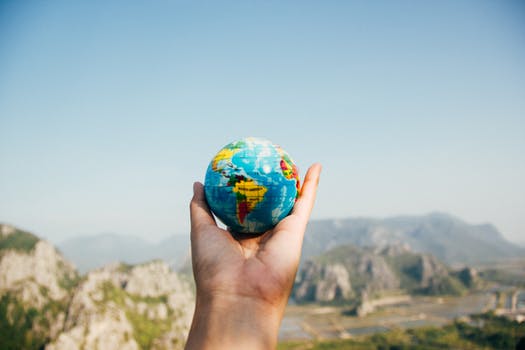Article written by Maria Fonseca and Paula Newton
Our perspective on energy is influenced by government regulation, environmental awareness and reduction in the use of energy, all that have been driven home to us for many years. The reality though is that global energy consumption and greenhouse gas emissions have been growing faster than ever, as billions of people in emerging economies are beginning to taste and demand more access to the sweet fruits of modern life. As globalization continues its determined path, the West has to become aware of a new reality. Did you know, for example, that your refrigerator uses nine times more energy than an average Ethiopian citizen ?
Global energy consumption has been growing, and it is expected to double or triple over the next century. How to combine what some call as an High Energy Planet, where all live within modern living standards, and the urgent need to control carbon emissions, biodiversity loss and environmental challenges ?
Rachel Pritzker (2014) debates this topic in an article for the Stanford Social Innovation Review. In it she mentions how we are primed to believe in driving less, turning of the lights and buying food that was produced locally. We are also encouraged to reduce our carbon footprint and be less resource intensive in the way that we go about things. Of course, as Pritzker points out there is very good reason for this, especially considering the damaging impact of energy sources like coal and oil.
Pritzker however, argues for a new perspective that pays more attention to the fact that we do need energy to meet our daily needs in life. As explained by Pritzker:
“We use it to power our homes, grow our food and manufacture our clothes and other basic necessities. Energy lets us communicate with our friends and family, drive to work and travel abroad.”
In fact, Pritzker also attributes energy to reducing the need for manual labour, which has been quite liberating, particularly to women and children. Not only this but energy aids the delivery of clean water, health care, lighting, telecommunications and transport. Clearly energy is essential for development and to be able to better deal with problems that occur. For these reasons Pritzker advocates a case in favour of energy abundance.
Is A High Energy Planet A Good Solution ?
After all, as she explains energy is needed for so much of what we do, and we are continuing to find new uses for energy. Pritzker describes how US electricity use is anticipated to increase by 29% between 2012 and 2040. And as Pritzker points out, abundant energy would allow so much more. One example she provides is magnetic levitation trains that would cut inter-city travel by 75%, laser based treatments to various diseases or commercial spaceships to take regular people into the atmosphere. In fact, energy abundance will increase global productivity, which will improve quality of life on a global scale. It would enable cheaper manufactured goods, providing many benefits for consumers everywhere.
Magnetic Levitation Train. Image source: WikipediaControversially perhaps, Pritzker states that a high energy planet could “offer tremendous benefits for the environment.” When she speaks of high energy planet, she obviously means energies that are cleaner, cheaper and less damaging for the environment. Examples provided include using saline water to deal with problems like drought or deforestation and using energy in new ways to reduce landfill, grow food indoors and remove carbon dioxide from the atmosphere. If electric cars could be charged simply as they drove over wireless pavements there could be tremendous reduction of carbon footprint.
Where To Find Cheap, Clean and… Abundant Energy ?
As Pritzker rightly points out, climate change is one of the biggest concerns that drives our fears relating to energy use and to just dismiss this issue is not possible. There is though growing consensus that the idea that renewables can replace fossil fuels is misplaced in a world that is becoming more and more global. This has led important personalities such as Jim Kim, the President of The World Bank, to speak about an “energy apartheid” and to state recently (concerning the energy situation in Africa):
“If some people have taken a position where we say no coal, no nuclear, no hydro, then we’re really not serious.”
How to solve this conundrum ? Pritzker offers some possibilities stating that renewables will certainly play their part but not only. Renewables like solar, wind and biofuels have been showing potential in achieving this. The problem is that they rely on climate that does not always produce the desired results, such as sun, and of course, wind. However, Pritzker argues that what is needed is abundant, cheap and clean energy as opposed to less energy use. Of course this will require fundamental change. Instead of focusing on oil and other environmentally unfriendly options there will be a need to look at new opportunities. Indeed, Pritzker states:
“Accomplishing this will require a global focus on energy innovation, including large, well-structured and consistent public investments in… new energy technologies.”
Focusing on research, development, demonstration and deployment of these new energy opportunities is of the utmost importance. Pritzker also advocates rather controversially the increasing use of carbon-free energy sources that are already in use, such as nuclear power. While these have their own fundamental challenges, they also can provide scalability, affordability and density (Pritzker, 2014).
Pritzker’s case for abundance is certainly interesting and shows that the emphasis on energy scarcity has perhaps been misplaced in recent decades. However, she argues that with a “dramatic shift in focus” including looking at scaling the right technologies and focusing on cheaper and cleaner options this could be achieved. It is hard to imagine this happening when oil is still available and accessible and while oil corporations are focusing on creating technology to extract difficult to reach oil, rather than focusing intently on new, cleaner sources. But what happens when the oil starts to really run out?
A sign of a shift in the major trends of energy is the rise of alternative and more democratic investment platforms, where anyone with some spare money, can invest in a renewable energy project. One example is the platform abundance generation.
Maybe Pritzker’s case for abundance will be revisited.
Additional resource: Documentary about alternative sources of energy

Maria Fonseca is the Editor and Infographic Artist for IntelligentHQ. She is also a thought leader writing about social innovation, sharing economy, social business, and the commons. Aside her work for IntelligentHQ, Maria Fonseca is a visual artist and filmmaker that has exhibited widely in international events such as Manifesta 5, Sao Paulo Biennial, Photo Espana, Moderna Museet in Stockholm, Joshibi University and many others. She concluded her PhD on essayistic filmmaking , taken at University of Westminster in London and is preparing her post doc that will explore the links between creativity and the sharing economy.


























